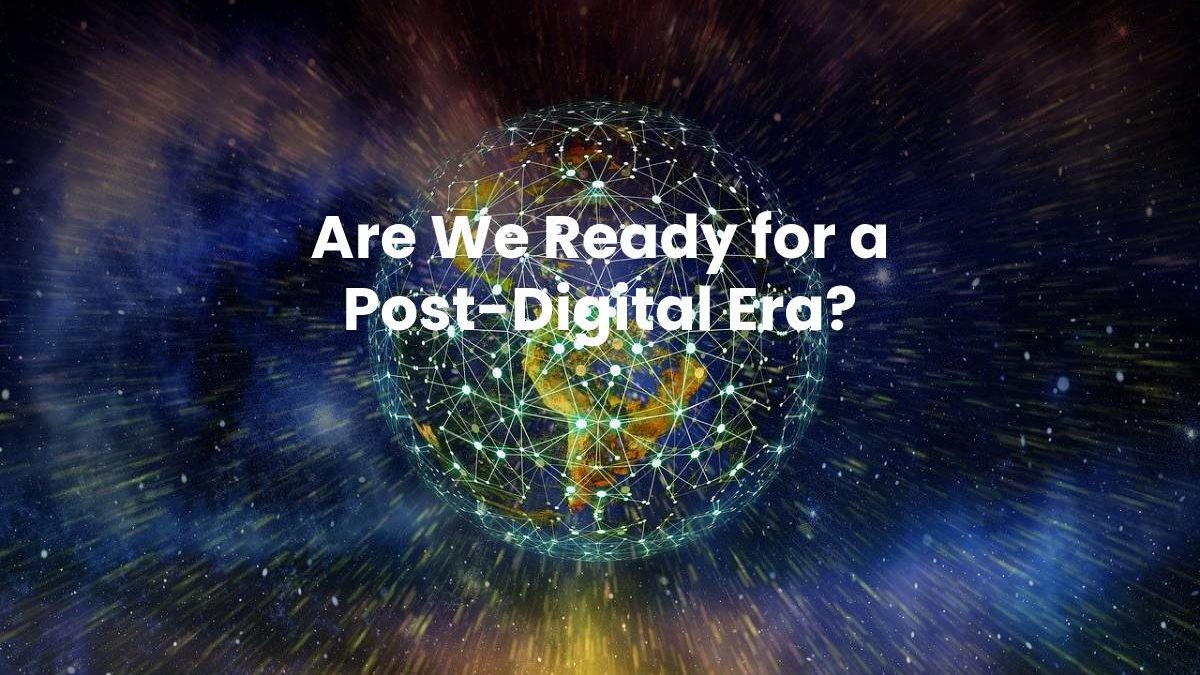The rapid pace that technology is changing and sweeping across both businesses and society in such a bold way is almost breathtaking. What this pace of technology is doing is carrying us from the digital age towards a newer type of reality that is predicted to be the post-digital era.
You might be wondering why post-digital, but if you think about where you are in the current day with over $1.12 trillion has been spent on digital infrastructures in 2019 alone. Over 60 percent of the world is already digitized, and as it continues to grow in every industry, that number will rise.
Enterprises and organizations have reached a crucial turning point. When everyone is saying that going digital is the way to go today, there will be a need for new rules to help everyone be successful. Digital is not going to be less critical; it’s just no longer going to be the price of differentiation between who has the upper hand and who doesn’t. You are no longer going to be seeing organizations that have a technological upper hand with their fancy i9 laptops and such, and everyone is going to be on a level digital playing field.
Table of Contents
What is a post-digital world?
A post-digital world is going to come from the application of digital tech in powerful and new ways. The tech that is going to be used for innovation will go beyond the simple foundational adoption of concepts and tools. Every organization will have a Chromebook as well as another tech that is going to support the digital infrastructure, but it is going to be more than that.
The current world is one where tech is already simplifying the business market and efforts through the use of AI and even CAPP (Computer Aided Process Planning). However, the main focus of the post-digital era will be using tech that is safe and secure enough to help build trust with customers, business partners, employees, and much more.
What will the post-digital era look like?
There is a lot of speculation as to what the post-digital era is going to resemble. Still, it will be a world where the ability for individualization and the need for instant on-demand capabilities help businesses to deliver and capture the market.
The next wave of technology is going to make it possible for companies to deeply customize their products, services, and even individual surroundings to suit on-demand deliveries of individualized goods. Organizations will have a better understanding of all the people that make their business possible and will have the agility to move closer to their needs.
The post-digital era is going to rely on technology that is going to help build relationships by catering to individuals in every aspect of their daily lives. In effect, what these organizations will be able to do is shaped by individuals’ very realities.
Most of these advances in technology are going to be positive and well received by the public. These post-digital era technologies are going to make healthcare diagnostics easier. More than half of the world’s population is already online, and more people are applying for technology. The outreach of tech is mostly positive as it is helping to improve agricultural practices along with reducing waste in the global supply.
Trends of a Post-Digital Era
There are going to be a few primary trends that are going to surface in the post-digital era. Here they are.
1. DARQ Power
New tech is going to be the catalyst for change. Businesses are going to be offered new capabilities like artificial intelligence, extended reality along with quantum computing. These technologies are going to allow businesses to reimagine their industries.
2. Unlock Consumers and Unique Opportunities
Tech-based interactions are going to allow for the expansion of tech identity for every consumer. The living foundation of knowledge is going to be vital to understanding the next generation of consumers.
3. Change the Workplace
Most workforces are becoming more human-based. There will be an empowerment of skills and knowledge, plus the new growth of capabilities because of technology. Companies will be able to adapt those technological strategies to create the next generation of the workforce by supporting a new way to work.
4. Enterprises are Vectors
Most business eco-systems rely on interconnectedness. However, it is those connections that put any business at risk. Businesses who are leading the industry are going to recognize that security joints are going to be necessary to join the venture.
5. Meet the Needs of Speedy Consumers
Tech is going to help immensely with the on-demand experiences of customized experiences. Organizations are going to have to re-image to meet this need and capture all opportunities as they arise.
Conclusion
The post-digital era is going to disrupt and reshape business and industry infrastructures as it brings about new and powerful capabilities. However, that doesn’t mean that the digital era is over; it’s the opposite. Most of the journey for the digital era is still in front of us, but the post-digital will require there to be new rules.
As all organizations are becoming more digital, the leadership of industries is going to depend on how fast they adopt and master artificial intelligence, extended reality, and distribute the ledger tech of quantum computing, among other things.
The path to the post-digital era is still awaiting us. Organizations are going to want to take their digital transformation to the next level and apply these newer technologies. In doing so, they will invest in their talents and build the skill sets needed for the post-digital era.

